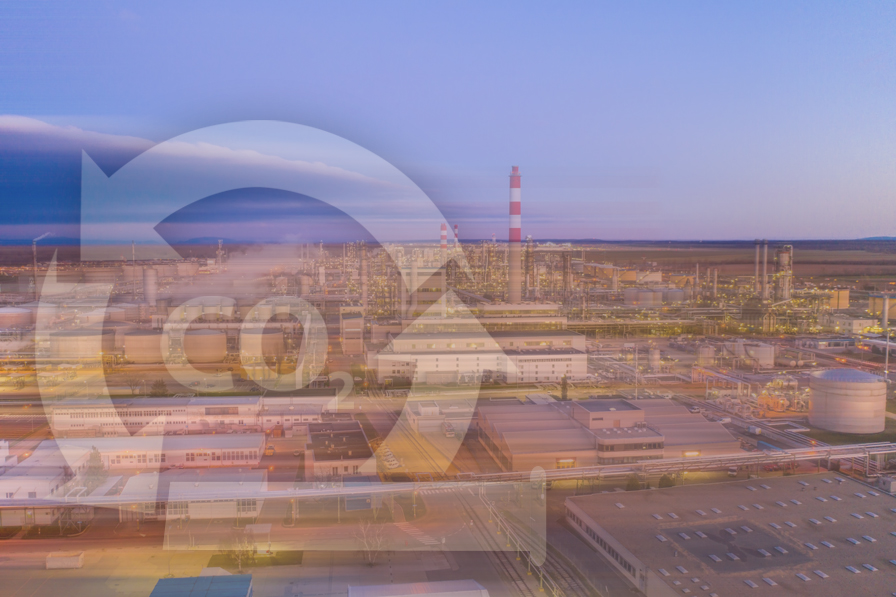Launch of a Call for Expression of Interest on CO2 in Dunkirk

On 6 February, GRTgaz launched a call for expressions of interest with a view to developing a pipeline CO2 transport network in the Great Maritime Port of Dunkirk. This initiative complements the calls for expressions of interest launched for hydrogen transmission. We met with Marion Lacombe, business developer at the “H2 and CO2 Transport” Division in the Hauts-de-France Region, in Valenciennes and Dunkirk, and Pierre-Yves Le Strat, business manager at the same Development Division for the Normandy and Seine Valley territories and CO2 transport market leader.
What part do you play in this first-ever call for expressions of interest?
Marion Lacombe: As project leader for the development of hydrogen transmission, I worked on calls for expressions of interest for transmission grids in this area. My job consists of building from everything that has already been done in hydrogen, in particular by the various departments that had already taken up this subject and studied the opportunities for GRTgaz.
Pierre-Yves Le Strat: I, meanwhile, provide support on the call for expressions of interest so that the solution provided fulfils the expectations of industry players and the territory, the rationale being to optimise the infrastructure ultimately proposed. Infrastructure development needs have been identified in a number of industrial basins. When it comes to decarbonisation, the stakes are high and affect large industries, in particular metallurgy, cement, lime and chemistry. These players, which emit a large quantity of CO2, do not have all the means they need to achieve a complete decarbonisation of their business by 2050 via the implementation of energy efficiency solutions or by switching to decarbonised energy carriers. Our role consists of offering them a concrete solution to enable the implementation of a CO2 capture, storage and recovery chain, essential to achieving their objective.
How does this project fit into the overall sustainable development and energy transition strategy of the Dunkirk Region?
Marion Lacombe: This project is an important vector in the move towards decarbonisation. It is championed by regional players such as the Great Maritime Port of Dunkirk and the Urban Community of Dunkirk. By working to develop a CO2 transport network and to capture CO2, GRTgaz is offering a response to the objectives of the region’s broader strategy.
Concretely, what do these calls for expressions of interest have in common with those issued for hydrogen?
Marion Lacombe: The issues at stake in this call for expression of interest coincide with those of hydrogen, as this GRTgaz’s consists of engaging in dialogue with institutional players, as well as with key industrial players who want to decarbonise their activities by implementing decarbonisation solutions. Beforehand, discussions need to take place with all the stakeholders, following the same process as for the hydrogen networks.
Pierre-Yves Le Strat: The objectives are not only similar, but also complementary. Ultimately, our aim is to establish three networks, one for each molecule: methane, hydrogen and CO2, pooled to serve all players. Through these networks, the stakeholders will then contribute to the attractiveness of these territories, by maintaining or developing their activity all the while decarbonising it, or by developing new projects and factories. This will be a real advantage for the area and, first and foremost, for the industrial port.
Marion Lacombe: It is a public and transparent approach that is not exclusively reserved for the players already identified. The resulting infrastructures will be accessible to all players requesting it.
What is the planned transmission capacity?
Marion Lacombe: The project will be sized to meet the needs identified at the end of the call for interest.
Pierre-Yves Le Strat: The Port of Dunkirk emits 20% of industrial CO2 alone and is the main CO2 emissions zone in France. The focus was placed on this industrial basin because of the high stakes its decarbonisation carries. We cannot yet establish exactly the level of capture, but if we were to give an order of magnitude, it could reach several million tonnes of CO2 per year. The first pipes could then be extended, given the location of the project, and collect more CO2 in the region.
How will this network be connected to CO2 sources?
Pierre-Yves Le Strat: Some industrial players will inject into it the CO2 which they capture, while others will be able to withdraw some, in a spirit of reuse. For example, they can use it to produce hydrocarbons, synthetic kerosene and synthetic methane. The aim is thus first to connect all manufacturers to the network. Furthermore, a CO2 terminal on the maritime façade will make it possible to liquefy CO2 molecules, and to load them on boats to export them to deep geological storage areas abroad.
Marion Lacombe: In this sense, Dunkirk’s geographical position over the North Sea is an undeniable advantage, as it facilitates access to CO2 geological storage capacities in this region.
Pierre-Yves Le Strat: The North Sea is the region of Europe where the most CO2 storage is developing. The aim is to join them.
What are the technical challenges?
Marion Lacombe: For GRTgaz, the aim is to transform the practices of a gas or renewable gas network that exists and has proven itself, by putting its skills to work for the CO2 molecule which has specific characteristics, well-known to GRTgaz.
And to conclude, what is the planned timetable?
Pierre-Yves Le Strat: The call for interest began on 7 February for a period of two months. If the market responds favourably to this stage, there will be more technical studies with questions of sizing and layout and definition studies up to the end of 2024. This should then take us to the end of grid construction and commissioning in 2028.
Process for capturing and injecting CO2 into geological reservoirs
Presentation of the call and press release

Call for expressions of interest for CO2 Dunkirk
